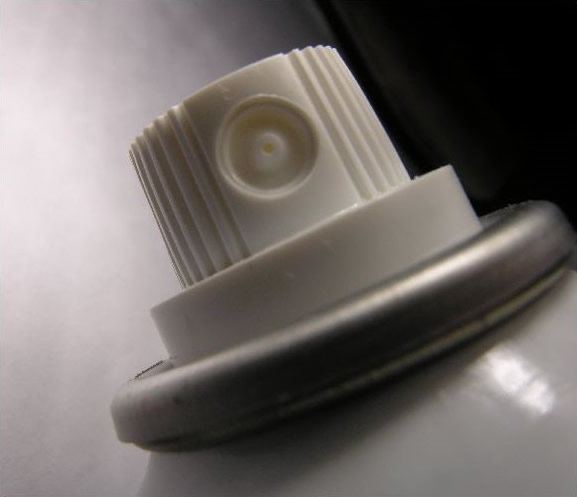I have been wandering around the aerosol industry for the last 35+ years both as an employee of major CPG companies, and, for the past 15 years as an independent aerosol technical consultant. While the attention to safety issues has dramatically improved over time, I am still amazed how often the simplest safety precautions are sometimes overlooked when filling aerosols with flammable propellants. I'll save my horror stories for another time, except for one particularly relevant example at the end of this article.

Let's start with a test, of sorts. Don't worry it's just pass/fail (yes/no) and focuses only on the elimination of potential ignition sources in an aerosol laboratory. These are just a few of the questions I ask during a routine aerosol laboratory safety audit...
- Are aerosol cans grounded to dissipate a static electric charge during filling, spraying, and puncturing (depressurizing) for disposal? In case you are wondering... yes, a static electrical charge has enough energy to act as an ignition source for flammable propellant vapor.
- Are lab technicians grounded by standing on grounded anti-fatigue mats during propellant charging? Especially important in dry cool environments (the winter season).
- Are your single station propellant filling burettes and semi-automated propellant fillers grounded to a verified ground connection?
- Is the filling of flammable propellants being done in a dedicated explosion proof hood? If your answer is "yes" you may want to make sure... I have recently seen explosion proof (XP) benchtop fume hoods used to charge flammable propellants where the hood motor and/or the hood lights and/or the electrical socket on the hood cabinet are not XP rated. In an audit any one of these conditions constitute a "FAIL" as all must be XP rated for the hood to be safely used for aerosol filling.
- If you are using a bench top hood, is there a flammable gas detector sensor mounted at or near floor level below the opening window of the hood? Flammable hydrocarbon propellants, along with being odorless and colorless, are heavier than air. If there is a propellant leak, such as a rupture in a propellant transfer line inside the hood, and the flow of the leaking flammable gas overcomes the capacity of the hood's air flow to vent the gas, then the excess propellant will pool unnoticed on the floor area spreading outward and upward throughout the room. Fair warning: following is the horror story I mentioned... Early in my career I worked for a company where this type of accident happened in an aerosol quality control laboratory located in a manufacturing plant. A large quantity of aerosols was being de-gassed for disposal in an XP rated hood, there was no gas detection in the room. Two technicians were unloading several cases of aerosols and puncturing (degassing) them in the XP hood. Unfortunately, the amount of hydrocarbon propellant vapor being released exceeded the hood's extraction capacity and accumulated unnoticed in the room (remember: hydrocarbon propellants are colorless, odorless, tasteless). The LEL (Lower Explosion Level) for the propellant/air mixture in the room was exceeded thereby creating a potentially explosive environment. A third person entered the area and turned on a (non-XP rated) light switch at the door to light another part of the room. As he flipped the switch, the spark generated as the contacts inside the switch closed ignited the flammable atmosphere, and the room exploded. I was based in another location, but I knew the two technicians standing in front of the hood. The third person, who turned on the light switch, was blown back out of the room and recovered from his injuries. Unfortunately, my two colleagues in front of the hood did not survive.
Now, let me put this in perspective. The scenario I just described is very, very rare. However, when working with flammable propellants, it is the POTENTIAL for this level of danger which drives the various safety aspects of equipping and operating an aerosol laboratory
Unfortunately, all too often we become complacent. Equipment and procedure shortcuts are taken to reduce capital costs, and, get the work done faster. A familiar mantra: "we've been doing it this way for XX years without a problem." My typical response: "well that's great, until you have a problem."
In closing, the aerosol laboratory offers numerous benefits... rapid turnaround of test samples for development purposes, fill samples for stability testing, create sales samples, and, quickly conduct new product development & testing, product spray optimization, etc., etc. To be clear, with the proper equipment, safety systems, procedures and training, sample filling of aerosol products can be completed quickly and safely.
John Chadwick, Principal at Aerosol Technical Solutions, LLC, is a veteran in the aerosol industry. Mr. Chadwick has a proven track record of successfully participating as an expert witness in court cases involving aerosol products and/or aerosol technology. His expert witness services include aerosol product failure analysis, reports, deposition, and testimony as needed. In addition to participating in product liability cases, Mr. Chadwick has also provided expert witness services in matters of intellectual property disputes and technology licensing agreements.
©Copyright - All Rights Reserved
DO NOT REPRODUCE WITHOUT WRITTEN PERMISSION BY AUTHOR.










